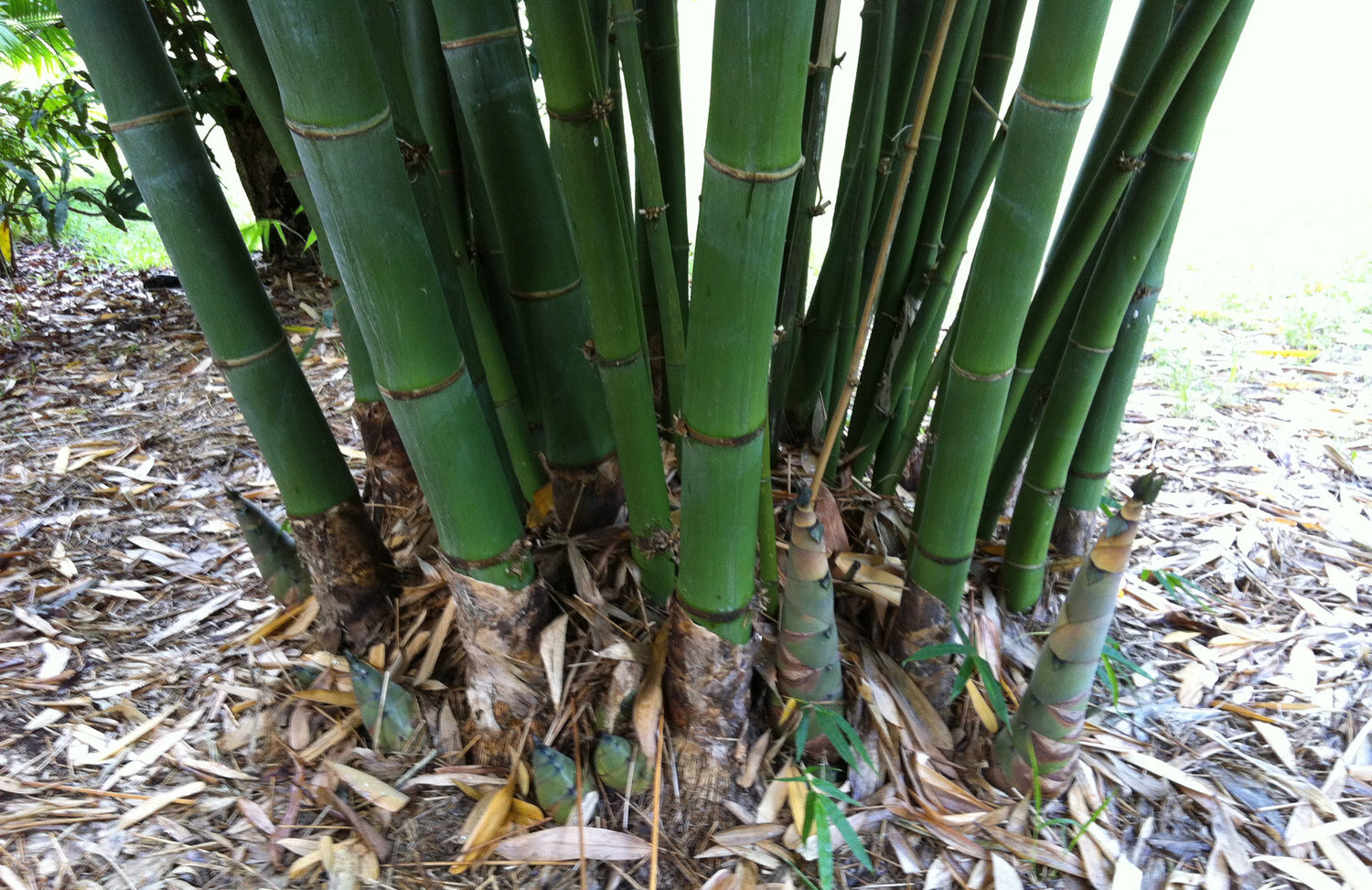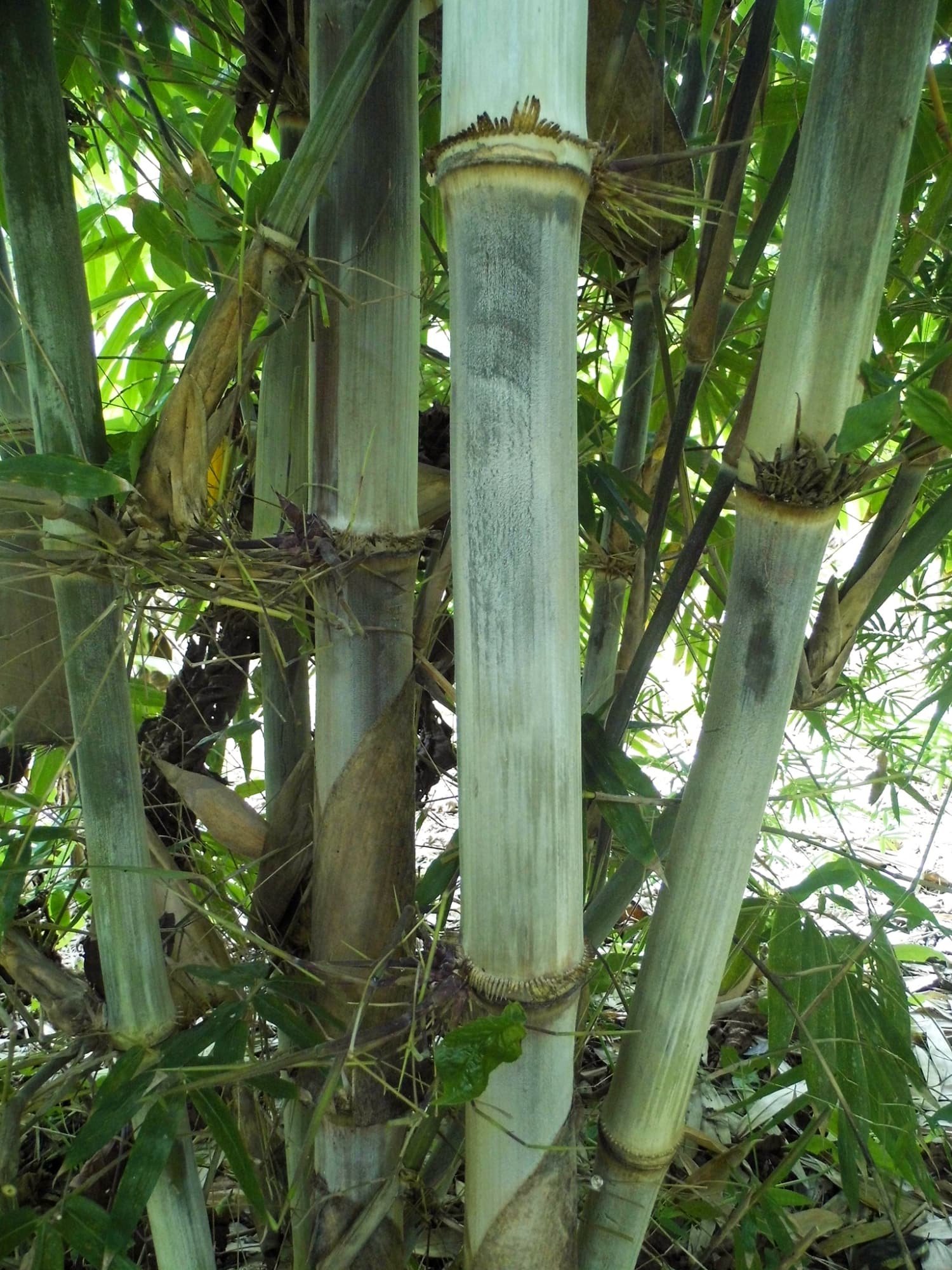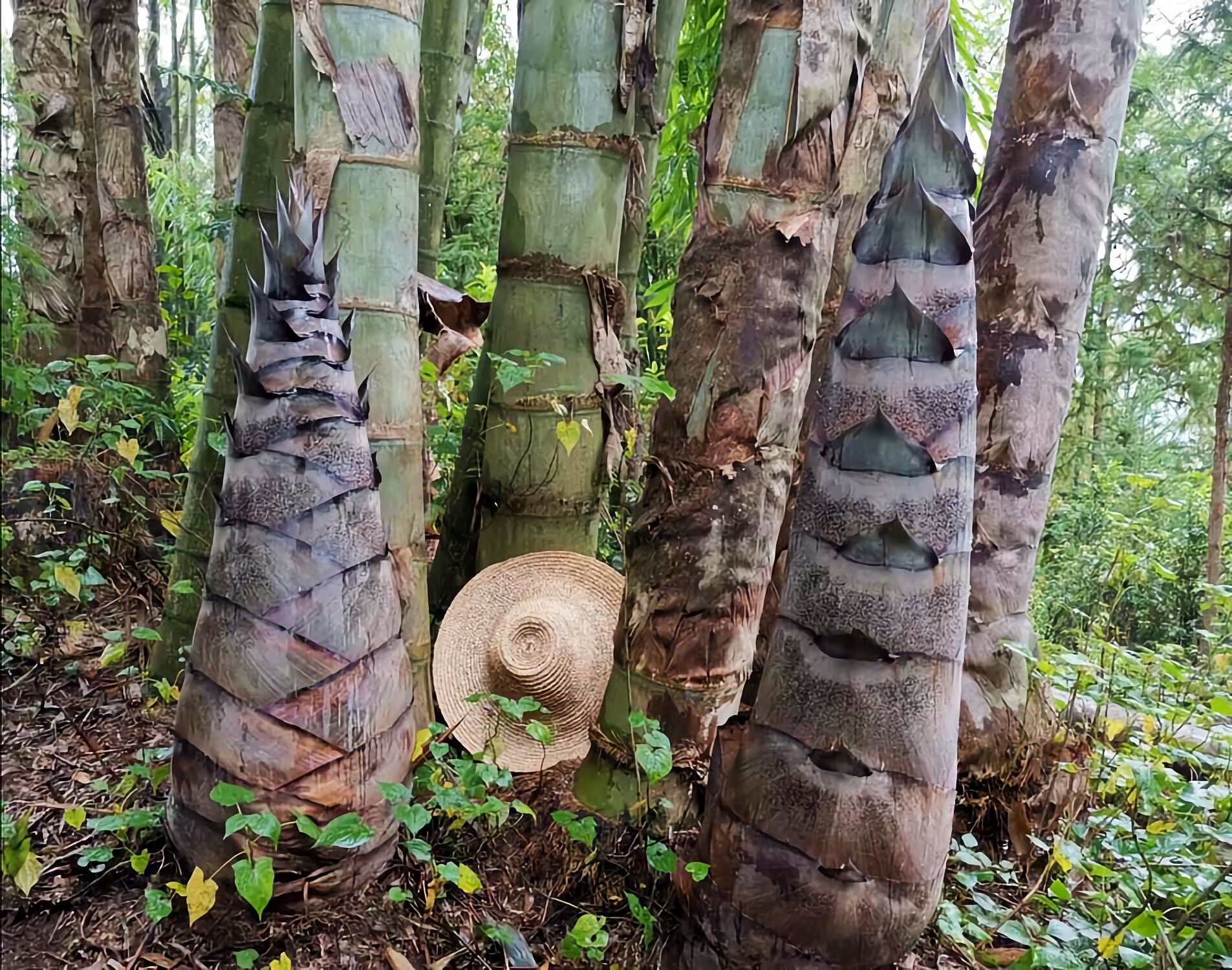Dendrocalamus latiflorus
Dendrocalamus latiflorus also known as Taiwan Giant Bamboo is a giant tropical and subtropical clumping species native to Southern China and Taiwan. This bamboo has sweet edible shoots and is often used in light construction.
Summary
| Height | 14 - 25 m |
| Diameter | 8 - 20 cm |
| Growth Habit | Dense Clumping |
| Climate | Tropical - Subtropical |
| Hardiness | -4°C |
| Origin | China - Taiwan |
Photos
Culms
Dendrocalamus latiflorus has thick walled (5-30 mm) woody culms between 14-25 m tall and 8-20 cm in diameter, which become thinner towards the top. Culm internodes are between 20-70 cm long and have a pale green color.
Branches
Many clustered branches with 1 larger dominant branch. Branches usually start occurring near the middle of the culm.
Leaves
Leaf-blades are lance-shaped and between 15-40 cm long and 25-75 mm wide.
Habitat
This bamboo species occurs in its native area under humid subtropical conditions, at elevations up to 1,000 m and can tolerate temperatures as low as -4°C. Dendrocalamus latiflorus prefers high rainfall and grows best in moist, sandy loam fertile soils. In the tropics it can be cultivated in lowlands as well as in the highlands, but heavy clay, gravel alkaline or acidic soils are not suitable for the production of edible shoots.
Uses
Culms used for structural timber (of medium quality) for house and temporary construction, agricultural implements, water pipes, basketry, rafts for fishing, woven wares, furniture, chopsticks, bamboo boards, and paper making. The leaves are used to make hats, to cook rice, to make roofs for boats, and as packing material. Shoots are consumed as a vegetable and are of very good quality.
Origin
Origin is not known precisely but probably native in Southern China including Taiwan at 100 - 700 m altitude. Dendrocalamus latiflorus is also cultivated in several countries of South-East Asia, such as Burma, Thailand, Vietnam, Japan, The Philippines and Indonesia.

















